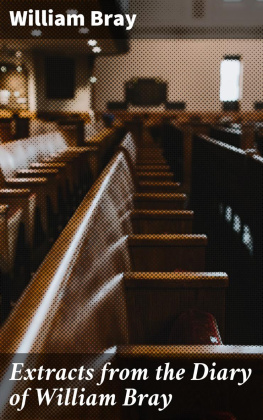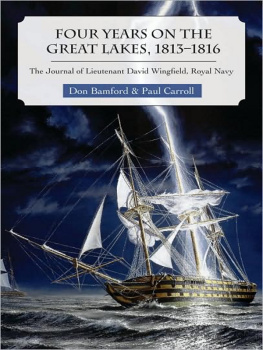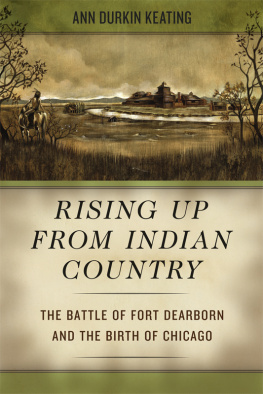This edition is published by PICKLE PARTNERS PUBLISHINGwww.pp-publishing.com
To join our mailing list for new titles or for issues with our bookspicklepublishing@gmail.com
Or on Facebook
Text originally published in 1895 under the same title.
Pickle Partners Publishing 2016, all rights reserved. No part of this publication may be reproduced, stored in a retrieval system or transmitted by any means, electrical, mechanical or otherwise without the written permission of the copyright holder.
Publishers Note
Although in most cases we have retained the Authors original spelling and grammar to authentically reproduce the work of the Author and the original intent of such material, some additional notes and clarifications have been added for the modern readers benefit.
We have also made every effort to include all maps and illustrations of the original edition the limitations of formatting do not allow of including larger maps, we will upload as many of these maps as possible.
DIARY OF CAMPAIGNS IN THE PENINSULA
FOR THE YEARS 1811, 1812 AND 1813
BY
LIEUTENANT WILLIAM SWABEY,
an Officer of E Troop (present E Battery), Royal Horse Artillery
EDITED BY COLONEL F. A. WHINYATES, late R.H.A.
INTRODUCTION
THE favourable reception accorded to the recently published Diary of a Cavalry Officer, induces the belief that the narrative of his services during the campaign in the Peninsula, under Lord Wellington, by Lieutenant W. Swabey, Royal Horse Artillery, may be found equally instructive and entertaining.
Through the kindness of Lady Bowman, daughter of Lieutenant Swabey, who served in E Troop from 1807 to 1820, I have been lent and authorised to arrange for publication, the diary kept by her father during a portion of his service in the Peninsula. It embraces the period between July, 1811, and August, 1813.
Lieutenant Swabey, in after years, appears to have written his reminiscences of some of the events in which he was concerned, adding amusing accounts of adventures not touched on in his diary; I have introduced these in their chronological order, placing them between brackets, so that the recollections of later years may not be confused with the daily record.
For the better comprehension of the narrative, I have divided it into separate parts and chapters, prefacing each part with a brief outline of the general military situation at the time, as gathered from the Wellington despatches, Napiers history, and other authorities, and have appended footnotes explanatory of the history and services of officers incidentally mentioned in Lieutenant Swabeys pages. A summary of the principal events of his life has been kindly sent me by his son, the Rev. Maurice Swabey, and is as follows:
* * * * *
William Swabey was born in Doctors Commons, London, on the 13 th of June, 1789. He was the third and youngest son of Maurice Swabey, of Langley Marish, Bucks, D.C.L., Fellow of the College of Advocates, and Chancellor of the Diocese of Rochester. His early education was received at Westminster School and the Royal Military Academy at Woolwich. On the 1 st of July, 1806, at the age of 16 years, he received a commission in the Royal Regiment of Artillery, and, in 1807, was present with Captain Cockburns No. 7 Company, 1 st Battalion, in the land force which cooperated with Admiral Lord Gambier at the bombardment of Copenhagen. He was ordered in July, 1811, to the Peninsula, with E Troop, R.H.A., and served in it during a considerable portion of the war. He was severely wounded at the battle of Vitoria and invalided home, but rejoined the army before the close of the war. He was present at the battle of Toulouse, and, marching through France to Calais, returned home in 1814 with the troop, which the following year he accompanied to Belgium and was within the retreat from Quatre Bras, and at the battle of Waterloo. He received the Peninsular and Waterloo medals. Shortly after promotion to the rank of 2 nd Captain, he retired, in March, 1825, from the service and settled down in Buckinghamshire, where he became J.P. and D.L., and captain of a troop of Bucks Yeomanry Cavalry.
In 1840, he emigrated with nearly all his family to Prince Edwards Island, of which his friend, Sir Charles Fitzroy (an old Waterloo officer), was then Lieut.-Governor. Captain Swabey continued in the colony till 1861, and developed such capacity for the management of public affairs that he became, successively, a member of Her Majestys Legislative and Executive Councils, Registrar of Deeds, Commissioner of Crown lands, and member of the Board of Education, besides undertaking latterly the duties of Lieut.-Colonel and Adjutant-General of the local Militia. It is scarcely too much to say that the Statute book of the Island is full of useful measures which he either initiated or promoted in his adopted home. When the Prince of Wales visited the Colony in 1860, Colonel Swabey was one of the two Military Aides-de-Camp to the Lieut.-Governor, who received from his Royal Highnesss own hand a fine portrait of himself, in recognition of their services. Colonel Swabey was entertained at a public banquet in the Colony and presented with a flattering address, signed by the heads of departments and many other prominent inhabitants, on his return to England in 1861. He was also allowed to retain for life the prefix of Honourable, which was a privilege limited to those members of Council who (prior to the Union, about 1867, of the North American Colonies) had received their appointments under the sign manual of Her Majesty the Queen.
Captain Swabey married, in 1820, Marianne, third daughter of Edward Hobson, of Somerly, Hants, and Hope Hall, Lancashire, Esquire, and had a family of eleven children. He died on the 6 th of February, 1872, having, towards the close of his life, resided for some years at Wavenden House, Bucks, a county endeared to him by family ties and early associations..............
* * * * *
A few words as to E Troop, R.H.A., may not be amiss here. It was formed on the 1 st of November, 1794, and in 1811 was stationed at Christchurch, under the command of Captain Robert MacDonald, in July of that year it was ordered on its first active service, and embarked at Portsmouth to join the army under Lord Wellington in the Peninsula. The establishment was as follows:2 nd Captain Thomas Dyneley, Lieutenants Robert Newland, Robert Harding, and William Swabey, Assistant-Surgeon A. MacDonald, M.D., 104 non-commissioned officers and men, {1} with 175 horses. The armament was light 6-pr. guns.
In 1816, after the termination of the long continental wars, various reductions and changes took place in the Royal Artillery, and E Troop became D, when the troop that had hitherto been so-named was reduced. It retained this letter till a reorganization in 1859, called the Brigade System, changed the designation of all units in the Regiment; further alterations followed, until at the present time, 1 st of January, 1395, it exists as E Battery, Royal Horse Artillery, commanded by Major J. McDonnell.









